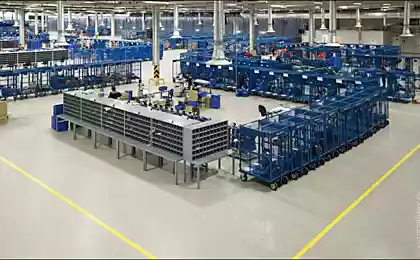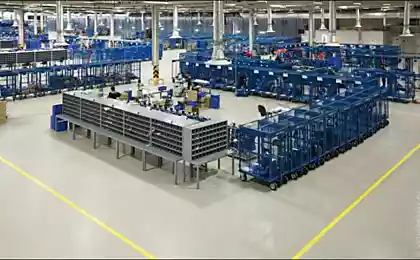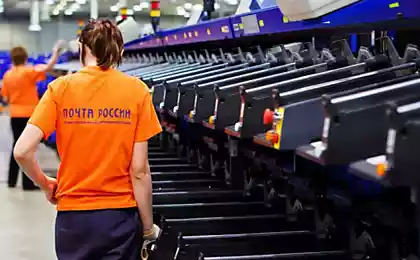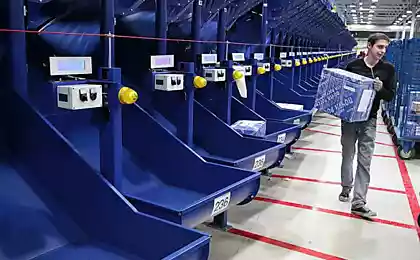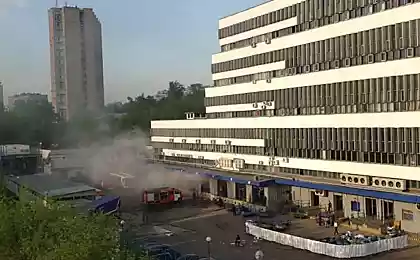2858
Excursion to the world center of parcel sorting FedEx

Memphis, Tennessee. Signal lights are flashing lightning, showing that sorting will begin later today ...
Beware, many photos!
Blue flashing lights are included not so often. They blink only when lightning is detected within a radius of 3 miles from the National Airport Memphis, and when they are included, all work stops. We can not allow the staff to the ladder, surrounded by metal structures, when there is a thunderstorm:
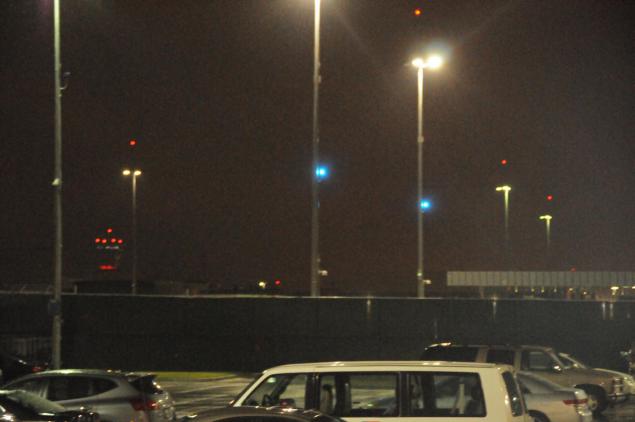
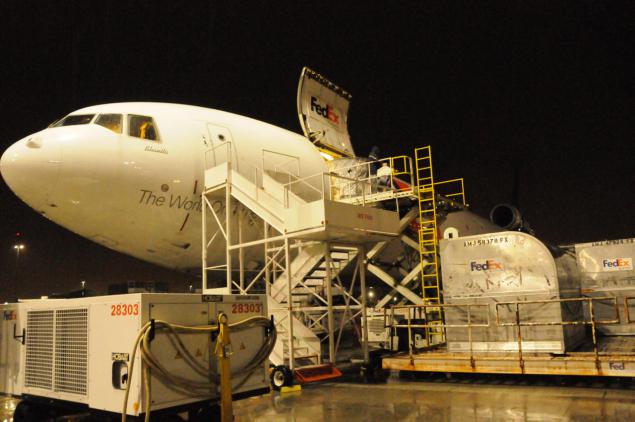
I sit inside the white shuttle bus FedEx, within the walls of which noise torrential rain and thunder are heard. For me, this unexpected delay only minor inconvenience, but for the thousands of employees of the World Center of FedEx (FedEx World Hub) - this is a big problem. Hundreds of thousands of parcels with 140 arriving aircraft must be sorted, and while the case did not move.

Boeing 777 awaiting unloading.
Within road tour CNET I arrived in Memphis with a population of 655 thousand. Residents in the southwestern part of the state of Tennessee with magnificent core of FedEx. The first stop was the лаборатория packing parcels , and today my goal - a world center of the sort, the largest distribution center for express shipments, massive construction, processing from 1.3 to 1.5 million parcels per night.
Finally, the storm subsides and the signal lights are switched off. Now you can start working. As the storm began shortly before the start of the night shift at 23:00, hundreds of employees who had to scurry back and forth, moving the parcel to wait the moment when it will be possible to start work. When I walked in the protected sector - consider it a simplified version of the checkpoint at the airport - a few hundred employees FedEx stood in line, waiting impatiently for the inspection to last longer go to their jobs.
180000 per hour
Meanwhile, the night sorting the world center - is an impressive operation. 180,000 parcels per hour passes through the center of the sort until the latest will not be processed.
It works like this: every evening about 140 aircraft FedEx come to Memphis from all over the world - the company serves 375 airports airplanes from 220 countries - loaded assumptions that need to be sorted and shipped the same aircraft on the route to the destination. After unloading the parcel pass through one of the 9 sectors of the input, and then fall into the "Matrix" where the first line of the staff verifies that the parcel had been correctly placed on the conveyor so that the barcode scanners can assume any direction except that of sending on which the parcel is worth on the line.
Upon entering the "Matrix" parcels move through the pipeline facilities further inland, first passing a scanner reads the barcode of the parcel. Depending on this information, the parcel fall into one of the automatic valve 19, after which they are sent to the secondary sorting, and then "Exit", where they are re-packaged into containers and then fall on a plane.
«140 came 140 departed»
The World Center for FedEx in Memphis - the largest of the 12 centers that perform nightly sorting letters and packages in the global network of the company. The rest are scattered around the country and around the world in places like Indianapolis, Dallas, Miami, Toronto, Oakland (CA), and Tokyo.
In total, FedEx handles about 4 million express (air) shipments per night, and 10 million shipments of all, including ground. But the world center - the heart of the whole operation, and FedEx argues that it is the largest item sorting worldwide.
Every night, 7,000 employees come to work to sort 1.3-1.5 million express shipments for change. Day shift, consisting of 3,500 employees, handles only about 650,000 with a term of delivery of parcels 2 and 3 days.
Commercial flights to Memphis stop landing at 21:30, and from this moment forth only land planes FedEx. In the quiet night, when due to thunderstorms are not included Beacons FedEx planes are lined up at the landing starting from 22:30 and continue landing one after the other until about 1:00 am:
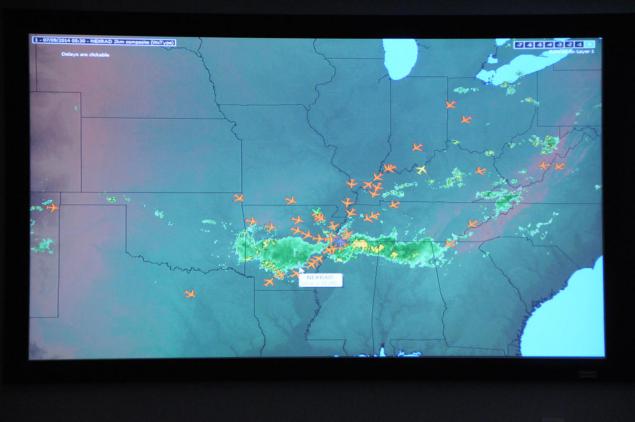
The aim is that the latest entry in the parcel has reached the sorting zone to 2:07. By 2:30 the first "outgoing" planes start to leave the exit zone of sorting and 4:30 am to all aircraft leaving Memphis. As coordinator of the tour says world center Rick Armstrong, "140 came 140 departed».
Individual teams are appointed responsible for the unloading of each liner. They work quickly, take a metal container with a shape fits perfectly into the contours of the interior of the aircraft, unload them and gently lowered to the ground:

Their goal - to unload the largest liner in the fleet FedEx - Boeing 777 - 1 hour and 7 minutes. Unloading the next in size liner - McDonnell Douglas MD-11 - takes 35 to 40 minutes:
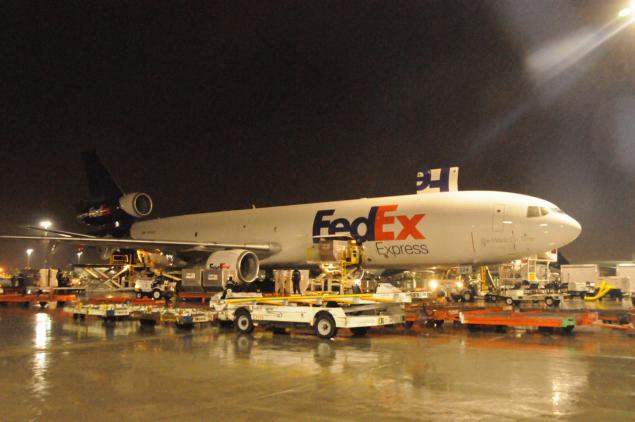
Unloaded containers placed on trucks and delivered to the input area:
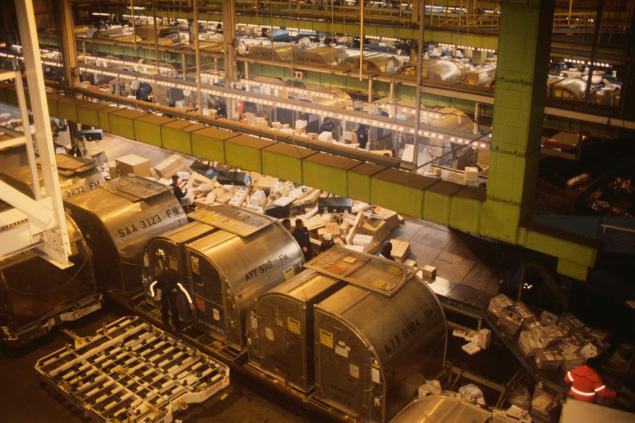
The world center of FedEx 9 input points to where the "Matrix". Five of them are intended for internal mail, and the remaining four are for parcels from abroad, as well as dangerous, difficult or mini cargo. Dangerous goods may contain corrosive, explosive or radioactive substances, weapons, and among other things, batteries and accumulators. FedEx's largest supplier of dangerous goods in the world, says Armstrong. List of allowable for carriage of dangerous goods is quite large, about the size of a phone book.
The flow of parcels
Once the parcel fall in the input sector, they are placed on one of the three conveyors, the top, middle or bottom. Most parcels weighing less than 75 pounds ( about 34 kg - approx. Pens. I>) and hits the middle belt, heading towards "Matrix»:
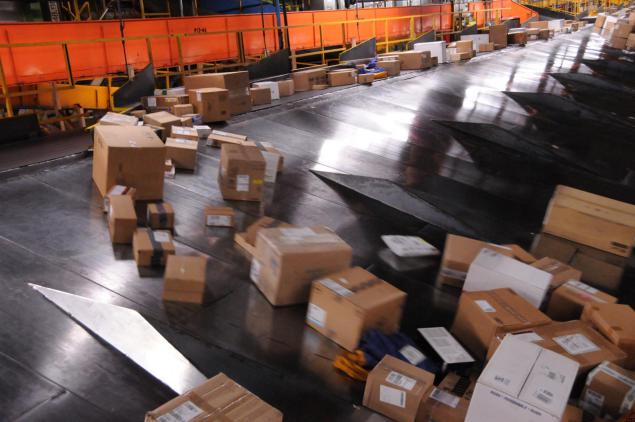
The heavier the parcel or parcels of irregular shape, such as skis or golf clubs, get to the bottom conveyor. The upper conveyor is designed for small parcels and documents that are sent to the distribution center of small parcels (Small Package Sorting System, SPSS).
Once the parcel from the input sector fall into the Matrix, created "flow" in a literal sense. If you watched the video tsunami in Japan in 2011, when the village swept away raging rivers, thousands of parcels destined for the matrix looks about the same, only without so horrific subtext:
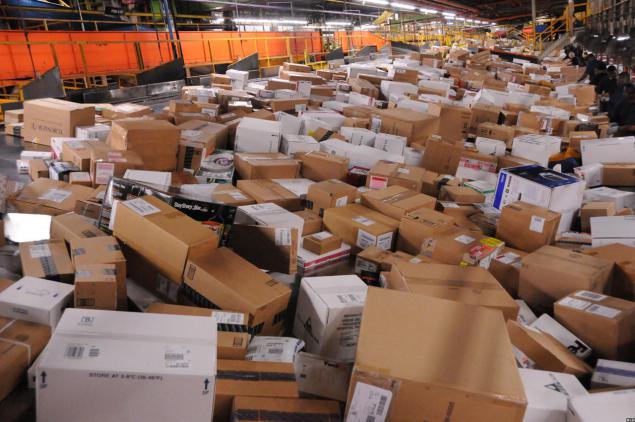
Parcels lapping groups - each container unloaded from an aircraft, comprising approximately 235 parcels. It would seem that such a stream should overwhelm workers in the Matrix. Well, that FedEx Packaging Lab works with clients ensuring that parcels are securely packed, because the parcel in the Matrix jump, fall and fight against each other at high speed until it fell into the sea of cardboard. Employees Matrix sort tens of thousands of parcels per hour:
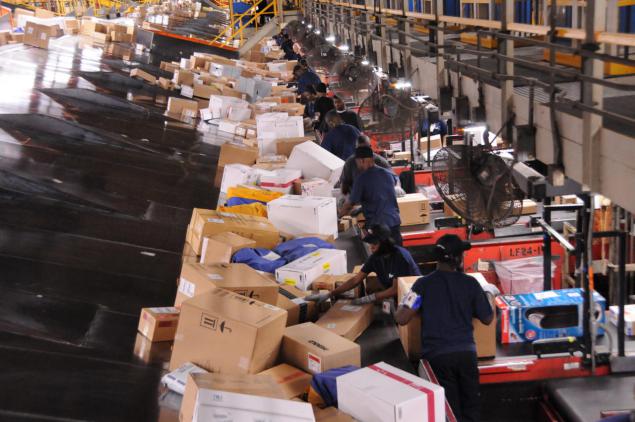
Next parcels sent through pipelines from the first 12 scanners on the way to 19 distributors and ultimately on the planes that will send them further towards the destination:

At the global screen control employees FedEx can track the location of each aircraft FedEx at any time. The screen displays the status of dozens of aircraft over the past few days:
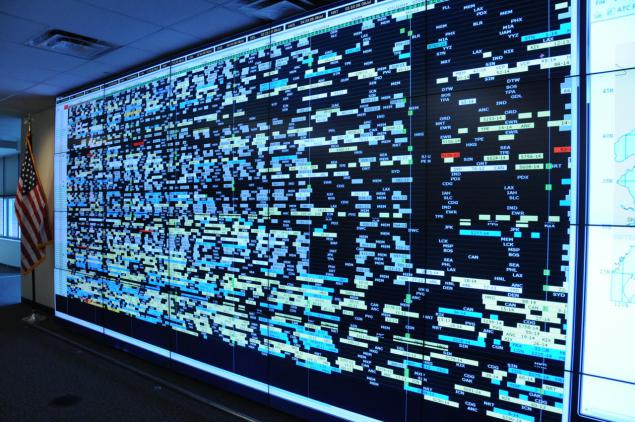
The system of distribution of small parcels
Perhaps the most exciting part of the action in addition to the flow of parcels moving toward the Matrix - a system of sorting small parcels. Here, in a separate building, the teams are sorted from 760 to 860 thousand small items - mostly documents - for noch.Po Armstrong said they are sorted with accuracy 99.97%.
When these small parcels pass through the inlet sector, they are placed on a conveyor and scanned. But instead of sorting, as is the case with larger departure - they move around the building until such time as not to fall into one of 1500 packets corresponding to their destination. When the package is filled, the system automatically generates a label and the employee signs it.
Sorting system small parcels mesmerizing, especially if we ignore it and focus on dozens of conveyors move each in its own direction and drags the letters and small parcels, which will eventually slip into a package:
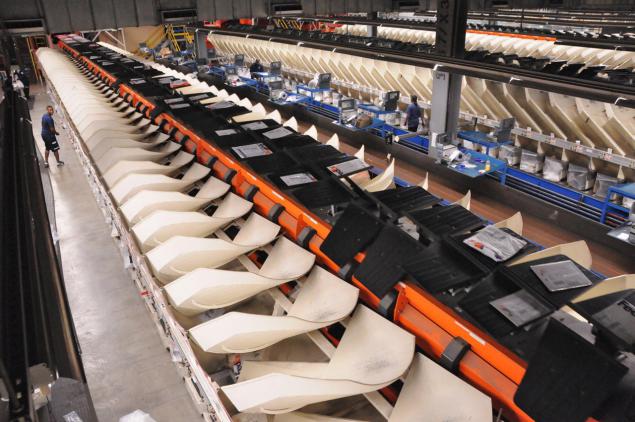
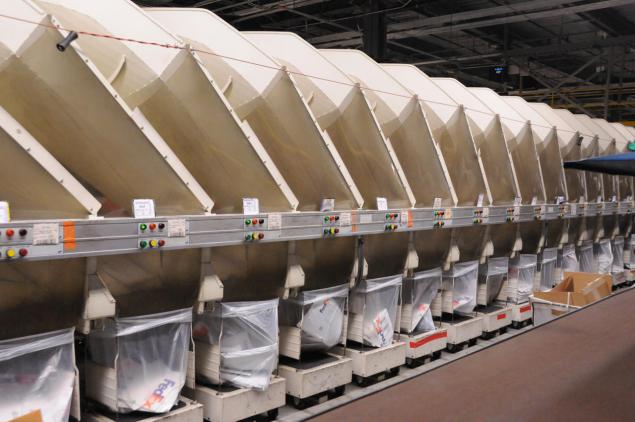
In the most complex parts processing center parcels FedEx - it's a giant mechanism with thousands of moving parts, each of which must be lubricated in time that the system functioned smoothly. But apart from this, the process is incredibly simple: to bring hundreds of thousands of parcels every night, sort them by size and destination, load processed on planes and went further. It looks incredible. And almost always FedEx parcels arrive on time. As stressed by Armstrong, "Accuracy of us - 99%. And we repeat this result tomorrow. "
Source: habrahabr.ru/post/229847/
Company SpaceX build futuristic spaceport in Texas
Translation of the depths of the sea: 800 kilometer canal NEPTUNE spends online on the ocean floor

